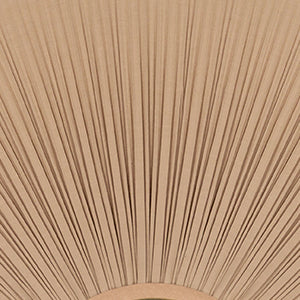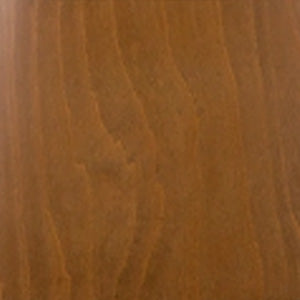Family
In Lisbon, Light and Serenity Inside a Reimagined Pombaline Apartment
At
Julien Labrousse, Elsa Kikoïne and Gabriela, 9 years old
We last caught up with them in 2019, mid-way through an idealistic, boldly offbeat project on the edge of Portugal’s Arràbida Natural Park. Back then, the couple was restoring two crumbling ruins into something visionary. And because loyalty runs deep at The Socialite Family, here we are six years later—this time in Lisbon, where life flows between the capital and the countryside, still under the name Etosoto. Elsa Kikoïne and Julien Labrousse, the creative minds behind the agency Policronica, didn’t pick just any neighborhood. They set their sights on a grand 18th-century apartment built in the pombaline style—an architectural language born from Lisbon’s reconstruction after the devastating 1755 earthquake. In this noble yet timeworn space, they saw an opportunity: to preserve its volumes and as many original details as possible, while adding their own restrained, contemporary touch. The result? A warm, soulful home where natural lime, waxed finishes, and generous woodwork meet a curated mix of 20th-century and contemporary art. Every object was chosen instinctively, every room invites you to slow down. It’s the kind of place you want to visit barefoot.
Location
LISBON
Author
Elsa Cau
Photos and videos
Constance Gennari
Dans le salon, on est accueilli par la table basse en forme de nuage de Kho Liang. Plafonnier en papier de Noguchi Akari. A gauche, un grand tableau de Manuel Tainha.
TSF
Elsa and Julien, can you tell us a bit about your backgrounds?
Elsa
I worked as an actress for many years and have always been passionate about design. In 2015, I trained at the École Boulle, which marked the start of a new chapter. Since then, I’ve been building a career in design—working on private commissions as well as collaborative projects through our agency, Policronica.
Julien
I’ve been working on culture-related projects—directly or indirectly—for over 15 years. What sets me apart is that I take a holistic approach: I handle everything from architecture and creative direction to operations and even the less glamorous parts, like funding. Most of my time is spent on the architectural and artistic side of things. My path hasn’t been exactly traditional, but it’s allowed me to bring ambitious projects to life—even when adversity struck. I have no regrets.
TSF
Julien, your journey blends entrepreneurship and architecture—you’ve owned theaters, hotels, and created award-winning projects like Lisbon’s Palacio do Grilo.
Julien
Julien
I didn’t plan to become an entrepreneur, but my brother is a serial entrepreneur and has always been a big influence. I didn’t follow the academic path—I went to the school of life, with all its ups and downs. Combining art with business has allowed me to build a career I genuinely enjoy. It hasn’t always been easy—financing these kinds of artistic projects comes with real challenges. I still manage and own several of them, including Le Trianon and l’Élysée Montmartre in Paris, and Palacio do Grilo in Portugal. At times, I’ve had to let go of certain ventures to fund new ones.
TSF
How would you describe your work and aesthetic?
Julien
I sometimes jokingly call myself an “arthouse entrepreneur.” Like indie films with fragile budgets, my projects are unconventional—and that makes financing tricky. It often means doing everything yourself to make it work. Each project tells its own story, and that’s where the style comes from. That said, over the past four years, especially with the Etosoto project, I’ve focused a lot on working with wood and even set up a small production workshop. That’s brought a certain coherence to our recent work.
Elsa
I wouldn’t say I have a defined style. I’m more interested in letting the history of a space speak. I aim to create interiors that feel peaceful and serene. The touch of whimsy comes through in select furniture pieces.
TSF
What's keeping you busy these days ?
Julien
We completed the Hôtel Élysée Montmartre, which went on to win several awards (Dezeen, Architizer, ArchDaily). And we’re finally launching our major project, Etosoto, on the cape in Portugal—after seven years of navigating building permits… You have to be persistent, but it’s worth it!
TSF
Tell us a bit about the environments you grew up in. Were your childhood homes creative or design-oriented?
Elsa
My mother was a passionate flea market hunter and passed down her love of beautiful objects. She was an antiques dealer for years. I grew up in homes where styles and eras blended. Some things really stayed with me—Lalique lamps, a Leleu dining table from my great-grandparents, an Isamu Noguchi coffee table, Richard Sapper’s Tizio lamps. We moved often, and she always had fun reinventing the décor with limited means—like a leopard-print wallpapered bathroom in the country, or pink carpeting in our small ’80s Paris apartment.
Julien
My parents owned a publishing house for architecture and design books—Équerre. I vividly remember our family apartment: “high-tech” style with Le Corbusier chairs, an Olivier Gagnère work table, Knoll furniture, Daphine lamps… It felt open and serene. I also have strong memories of my uncle’s wild countryside house—a kind of bohemian artist’s retreat where everyone showed up unannounced. It was poetic, decadent, theatrical—and hugely inspiring. That house was the original spark for the Palacio do Grilo.
TSF
Would you say those early memories shaped your taste and your way of seeing design?
Julien
Absolutely. My parents published books on Japanese architecture—including work by Kazuo Shinohara, whom I admire. There’s a kind of cultural inheritance I’m proud of.
Elsa
Definitely. I learned to recognize styles and designer names at flea markets and antique fairs. That knowledge stuck with me.
TSF
Tell us about this Lisbon apartment.
Elsa & Julien
We moved to Lisbon to begin a new chapter and be closer to the projects we were developing in Portugal. We fell in love with the Campo de Mártires da Pátria—a local, very Portuguese neighborhood that’s still untouched by tourism. Chickens and ducks still roam freely in the square’s gardens! We’re also near the beautiful Jardim do Torel, right in the heart of Lisbon’s energy. We found this large apartment, untouched for over 40 years, in a building that’s pure pombaline elegance. The vibe here is warm and communal—everyone knows each other.
TSF
Was the renovation intense?
Elsa & Julien
It was a long process—everything was in ruins. Pombaline apartments tend to be spacious but cut up into small rooms. We opened up the layout as much as we could without erasing the original footprint. All the original woodwork was restored, and we replaced the windows using traditional joinery techniques. We added a subtle Parisian touch with a Hungarian-point oak floor—unlike the typical Lisbon pine floors, which are less refined. All the walls were finished in hand-applied lime plaster with a beeswax glaze, which gives a warm, textured look. We sourced the lime from a small, passionate maker near Lisbon—Fradical. And of course, we designed and built a lot of the furniture ourselves: the kitchen, wardrobes, banquettes, lighting, and more.
TSF
What was the biggest challenge?
Elsa & Julien
Honestly, we love working on our own spaces—so it never felt like a burden. The only real learning curve was applying the lime plaster. It was our first time using this technique.
TSF
What kind of atmosphere were you aiming to create?
Elsa & Julien
Elsa really led the way here. The goal was to highlight the elegance of pombaline architecture with a minimalist, almost meditative touch—somewhere between Axel Vervoordt and Rose Uniacke. The materials are simple but rich: lime plaster, stucco veneziano, wood, marble, and lacquered joinery. It’s a luminous, pared-back space that still feels welcoming. The period architecture gives it all its depth and personality.
TSF
What’s changed since our last visit?
Elsa & Julien
Our wooden house is still standing—it’s the prototype and base camp for our ongoing Cabo Espichel project. The building permit process took years, but the full project is finally launching!
TSF
How has family life influenced your design choices?
Elsa & Julien
Our professional projects usually don’t revolve around family needs. But at home, we do think about how we live. For example, we made the kitchen and dining area into one big, open space—that’s where we spend most of our time together.
TSF
Are there any specific pieces in your home that you especially love?
Elsa & Julien
Some came with us from previous homes—even if they weren’t a perfect fit. Others were chosen just for this space. In the living room, there’s an Ennio Chiggio sofa for Nikol, a cloud-shaped coffee table by Kho Liang, and a large Noguchi Akari ceiling light. We love the chair and side table by Frédéric Pellenq, and among the artworks: a pyramid sculpture by Secil from Ludovic Duprez, a steel piece by Clara Imbert, and a large painting by Manuel Tainha. We also love the plaster molds from Atelier Lorenzi, which sit on the piano. Many of these pieces came from Galeria Foco and Barracuda—two fantastic Lisbon spots for art and vintage design.
Devant un tableau ancien, une petite lampe de Franco Buzzi Ceriani.
Lampadaire "Turbine" de Gérard Rignault.
Dans la salle de bains recouverte de marbre, une chaise signée Frédéric Pellenq.
TSF
Any favorite local addresses to recommend?
Elsa & Julien
Yes! Galeria Foco—a great gallery supporting Lisbon’s new generation of artists. Depozito—a massive warehouse full of Portuguese artisanal pieces. And Taberna do Calhau—an amazing little tasca with seriously good food.
TSF
What’s your take on The Socialite Family?
Elsa & Julien
We love discovering how other families live—it’s a glimpse into their intimacy, the connection between people and the objects they choose to surround themselves with. The Socialite Family captures that so well.
TSF
Do you have a favorite piece from our collection?
Elsa & Julien
We love so many of your pieces—they’re simple, timeless, and versatile. The
the
and the matching
are among our favorites.
"Le canapé du designer italien Ennio Chiggio pour Nikol structure le salon" explique Elsa Kikoïne.
Le beau plafonnier en papier de Noguchi Akari.
)
)
)
)
)
)
)
)
)
)
)
)
)
)
)
)
)
)
)
)
)
)
)
)
)
)
)
)
)
)
)
)
)
)
)
)
)
)
)
)
)
)
)
)
)
)


















































